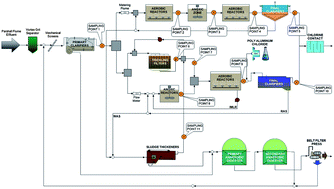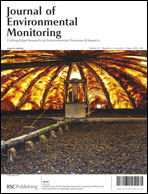Disinfection by-product formation potentials (DBPFPs) in wastewater effluents from eight wastewater treatment plants (WWTPs) were investigated. In addition, a WWTP with one primary effluent and two different biological treatment processes was selected for a comparative study. Formation potential tests were carried out to determine the levels of DBP precursors in wastewater. WWTPs that achieved better organic matter removal and nitrification tended to result in lower DBPFPs in effluents. For the WWTP with two processes, haloacetic acid, trihalomethane, and chloral hydrate precursors were predominant DBP precursors in the primary and secondary effluents. The percent reductions of haloacetonitrile and haloketone formation potentials averaged at 96% which was high in comparison to the reductions of other classes of DBPFPs. In addition, biological treatment changed the DBPFP speciation profile by lowering the HAAFP/THMFP ratio. The eight plant survey and the comparative analysis of the WWTP with two processes implied that besides nitrification, there may be other confounding factors impacting DBPFPs. Oxic and anoxic conditions, formation and degradation of soluble microbial products had impacts on the DBPFP reductions. This information can be used by water and wastewater professionals to better control wastewater-derived DBPs in downstream potable water supplies.

You have access to this article
 Please wait while we load your content...
Something went wrong. Try again?
Please wait while we load your content...
Something went wrong. Try again?


 Please wait while we load your content...
Please wait while we load your content...